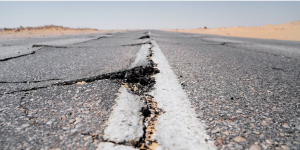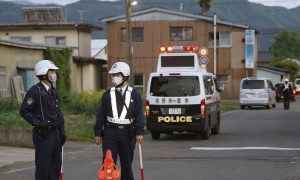The Japanese government was strongly criticised by neighbouring countries South Korea, China and anti-nuclear activists for approving the move to release over one million tonnes of treated water of the Fukushima nuclear plant into the sea.
Calling it an “inevitable task,” Japan’s PM Yoshihide Suga said that the water will be released “after ensuring the safety levels” and following measures to “prevent reputational damage”, reported AFP.
Supported by the International Atomic Energy Agency (IAEA), the decision was taken after several years of debate. The release is not likely to begin for several years and may take decades to complete.
On Monday, South Korea’s foreign minister expressed “serious regret” even before the decision was made official. Zhao Lijian, Chinese foreign ministry spokesman pushed Japan to “act in a responsible manner”.
Zhao said, “To safeguard international public interests and Chinese people’s health and safety, China has expressed grave concern to the Japanese side through the diplomatic channel.”
Also Read: Accident at Iran nuclear facility, no casualties or pollution: Reports
Local fishing communities fear that releasing the water will cause people to not trust or eat seafood for years. Kanji Tachiya, head of the local fisheries cooperative in Fukushima told NHK, “They told us that they wouldn’t release the water into the sea without the support of fishermen.”
“We can’t back this move to break that promise and release the water into the sea unilaterally,” he added.
Japan’s government argues that the release will be safe because the water is processed to remove almost all radioactive elements and will be diluted, reported AFP. IAEA says that the release is similar to processes for disposing of wastewater from nuclear plants elsewhere in the world.
About 1.25 million tonnes of water has accumulated in tanks in the Fukushima nuclear plant over the years. The plant was damaged after going into a meltdown following a 2011 Tsunami.
Advanced Liquid Processing System(ALPS), an extensive pumping and filtration system extracts tonnes of newly contaminated water each day and filters out most radioactive elements, reported AFP.
This filtration process removes most of the radioactive elements in the water, however, some remain, including tritium.
Also Read: ‘Shoulder your historic responsibility’: Algerian official to France over Nuclear test sites
About 140 cubic metres (5,000 cubic feet) of radioactive water was produced by the site per day in 2020 and storage space is expected to run out by the summer of 2022.
IAEA Director General Rafael Mariano Grossi had said last year, “Releasing into the ocean is done elsewhere. It’s not something new. There is no scandal here. Either method would be “in line with well-established practices all around the world.”
A government panel had earlier endorsed either diluting the treated water before releasing it into the ocean or releasing it as vapour, and the IAEA says either of the two options are acceptable.
Greenpeace, an anti-nuclear activist group strongly criticised the Japanese government for “once again failed the people of Fukushima”.
Climate and energy campaigner Kazue Suzuki said in a statement, “The cabinet’s decision failed to protect the environment and neglected the large-scale opposition and concerns of the local Fukushima residents, as well as the neighbouring citizens around Japan.”
Michiaki Kai, an expert on radiation risk assessment at Japan’s Oita University of Nursing and Health Sciences said, “There is consensus among scientists that the impact on health is minuscule.”






